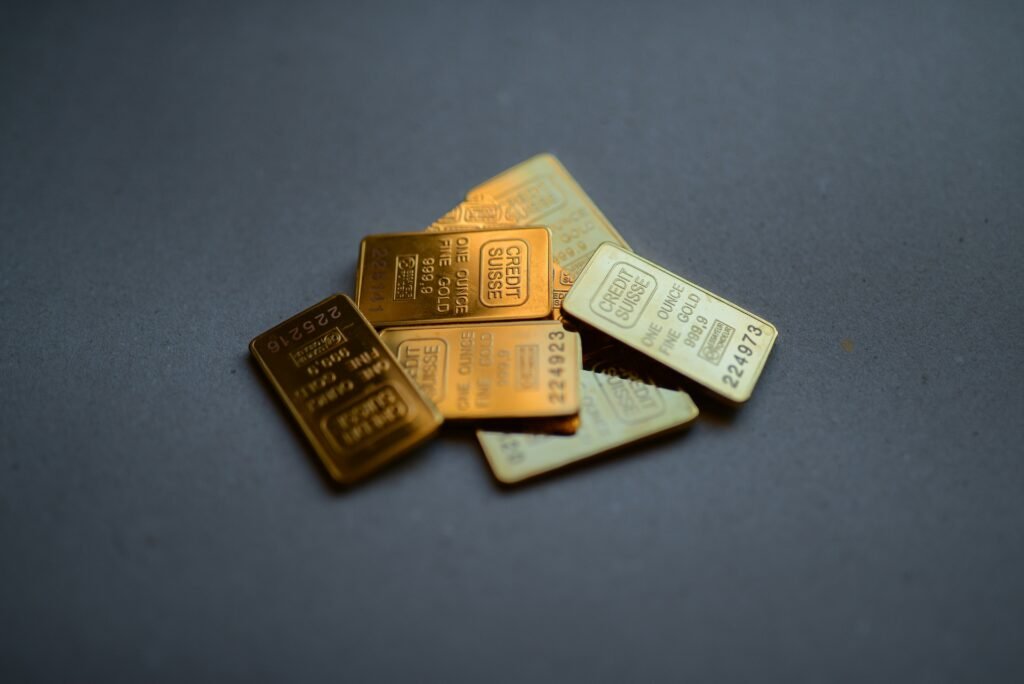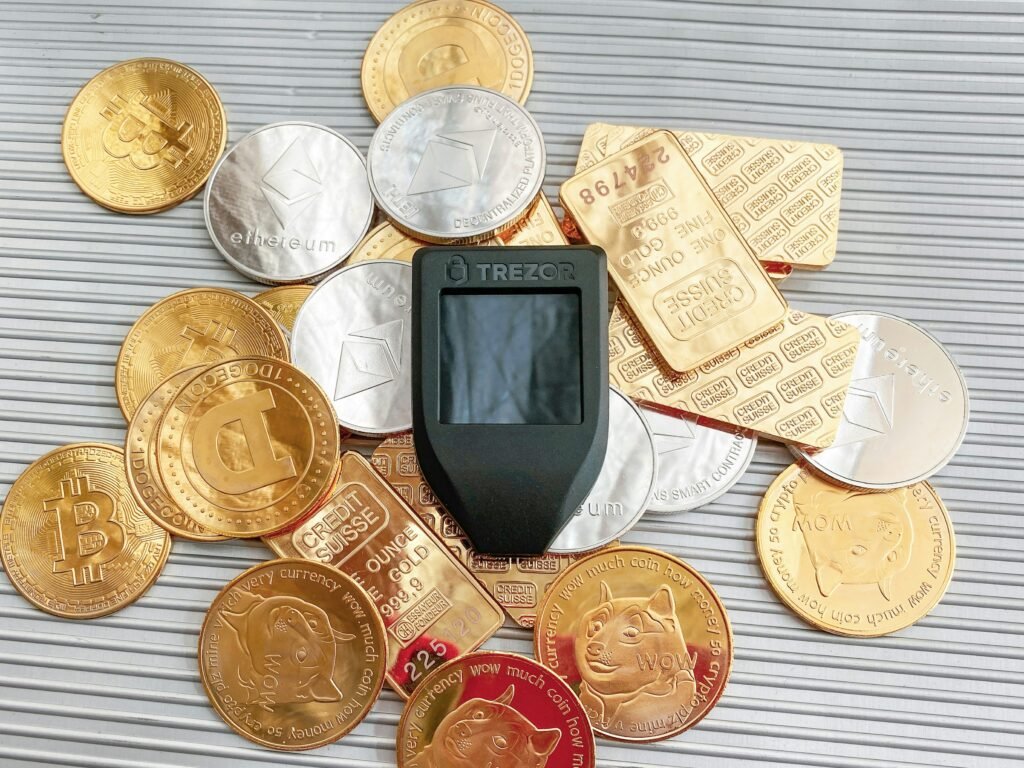Is investing in gold really as safe as they say? For centuries, gold has been viewed as a reliable store of value. Yet, before making any investment, it’s imperative to understand both the potential benefits and the drawbacks. Let’s break it down and see if there are indeed downsides to investing in this timeless metal.

This image is property of images.unsplash.com.
Understanding Gold as an Investment
Gold, often referred to as a “safe haven” asset, tends to hold its value even in turbulent economic times. When stock markets fluctuate or inflation rises, many investors flock to gold, believing it will protect their wealth. But how does it stack up against other investments?
The Nature of Gold
Gold is a physical asset, distinguishable from digital or paper assets like stocks and bonds. Its intrinsic value, rooted in scarcity and desirability, provides a sense of security. Beyond jewelry and decor, gold is used in technology and medicine, contributing to its diverse demand.
Market Volatility
Like any investment, gold experiences its fluctuations. While it may not be as volatile as stocks, prices can swing based on a range of factors, from geopolitical events to changes in interest rates. You could buy gold at a high price, only for its value to drop shortly after.
| Factor | Impact on Gold Prices |
|---|---|
| Economic Stability | Prices typically rise during instability |
| Central Bank Policies | Changes in interest rates can affect gold value |
| Supply and Demand | Increased demand or limited supply can drive prices up |
Advantages of Investing in Gold
Before probing the downsides, it’s critical to acknowledge the advantages of gold as an investment. Understanding the pros can help you weight whether the cons might be significant when making your investment decision.
Hedge Against Inflation
Gold has long been touted as a hedge against inflation. Historically, as the purchasing power of fiat currency decreases, gold has maintained its value. You might find that when inflation rises, the value of the dollar decreases, but your gold investment often remains stable or even increases.
Portfolio Diversification
Including gold in your investment portfolio can effectively diversify your assets. It usually has a different price movement than stocks, real estate, or bonds, which means that when other assets falter, gold might shine. This diversification can help in balancing your portfolio and decreasing risk.
Liquidity
Gold is one of the most liquid assets. Whether you need cash or are looking to sell your investment, gold can be quickly converted into money. This instant liquidity can provide peace of mind in times of emergency or urgent need.
The Case for Caution: Downsides to Investing in Gold
While there are several benefits tied to gold investments, it’s essential to consider the potential downsides. Let’s examine some of the critical drawbacks that could affect your decision.
No Passive Income
One notable downside of investing in gold is that it doesn’t generate passive income. Unlike stocks that pay dividends or real estate that provides rental income, gold remains stagnant until sold. Therefore, if you’re looking for continuous cash flow from your investments, gold won’t fit this requirement.
Storage and Insurance Costs
Owning physical gold comes with additional considerations, such as storage and insurance costs. You’ll need a safe place to store your gold, like a safety deposit box or a secure home safe. The expenses tied to these options can add up, potentially eating into your investment profits.
Price Fluctuations
As mentioned earlier, gold is not immune to price fluctuations. Although it might be more stable than some assets, unpredictable swings can lead to losses, especially if you purchase gold at a peak price. If you find yourself in a position where you need to sell when prices are down, you may face disappointing returns.
| Downsides | Description |
|---|---|
| No Passive Income | Gold does not produce income |
| Storage and Insurance Costs | Safeguarding gold incurs expenses |
| Price Fluctuations | Value can decrease unpredictably |
Market Influences on Gold Prices
To understand the risks involved with gold investment further, it’s vital to consider the various market influences that can sway prices. By being aware, you can make more informed decisions about when to invest.
Economic Factors
Economic indicators such as GDP growth, unemployment rates, and inflation can have a significant impact on gold prices. When the economy is thriving, gold may not seem as appealing. Conversely, during economic downturns, gold often becomes a go-to for investors seeking safety.
Geopolitical Events
Wars, political instability, and international conflicts can drive gold prices up. In uncertain times, many see gold as a safer asset, increasing demand and thus pushing prices higher. Keeping an eye on global events can provide hints about when to enter or exit your investment.
Currency Strength
The strength of the U.S. dollar, in particular, plays a crucial role in gold pricing. When the dollar weakens, gold becomes more expensive in other currencies, potentially leading to increased demand. Conversely, a strong dollar might lead to lower gold prices.

This image is property of images.unsplash.com.
Alternatives to Gold: Weighing Your Options
While gold is a classic investment, you might want to consider other options that could fulfill similar investment goals without some of the downsides associated with gold.
Precious Metals
Investing in other precious metals like silver, platinum, or palladium can offer similar benefits without solely relying on gold. Different metals have varying price movements based on industry demands, and diversifying across multiple metals could offset some risks.
Stocks and Mutual Funds
If you’re looking for investments that can provide passive income, consider stocks or mutual funds. Companies that deal in gold mining can offer you exposure to gold prices while also providing dividends.
Real Estate
Investing in real estate can offer multiple income opportunities, such as renting, and it also has the potential for price appreciation. Not only does it create cash flow, but it’s considered a more tangible asset than gold.
| Investment Type | Pros | Cons |
|---|---|---|
| Precious Metals | Similar benefits to gold | Individual market risk |
| Stocks and Mutual Funds | Potential for passive income | Higher volatility compared to gold |
| Real Estate | Creates cash flow and offers appreciation | Management and operational costs |
Strategies for Investing in Gold
If you’re still inclined towards investing in gold, establishing a strategy is paramount. Determining how you want to invest can mitigate some of the previously discussed downsides.
Physical Gold
Investing in physical gold, such as coins or bars, requires careful consideration regarding storage and insurance. Aim to purchase from reputable dealers to avoid counterfeits. Always maintain a clear understanding of premiums – the markup above the intrinsic value.
Gold ETFs
Exchange-Traded Funds (ETFs) focused on gold offer a way to invest without the challenges of physical storage. You can buy shares in a fund that holds gold, enabling easier trading and lower costs.
Gold Mining Stocks
Investing in companies that mine gold can provide you with exposure to gold prices while offering the potential for dividends. This strategy can mitigate some risks associated with owning the physical asset, but it’s essential to research the companies thoroughly.

This image is property of images.unsplash.com.
Long-Term vs. Short-Term Investment
Your investment strategy in gold can also pivot on whether you view yourself as a long-term or short-term investor. Each perspective comes with its unique advantages and disadvantages.
Long-Term Investment
Gold tends to hold its value over the long haul, making it a good choice for individuals looking to preserve wealth. If you can be patient and weather market fluctuations, gold may serve as a stable option.
Short-Term Investment
If you prefer a shorter investment horizon, timing is vital when investing in gold. Fluctuations can present opportunities for gains but come with risks. You’ll need to keep a close eye on the market trends to maximize your potential profits.
Conclusion: Is Gold Right for You?
In weighing the downsides and upsides of investing in gold, you can make a more informed decision that aligns with your investment goals and risk tolerance. While gold has its benefits, including stability and portfolio diversification, it also holds certain risks, such as lack of passive income and price volatility.
Only you know your financial situation, investment goals, and comfort level with market fluctuations. If you decide that gold fits into your portfolio, ensure you have a clear strategy and keep abreast of market trends. The journey through investment is personal, and having the right tools and knowledge can make all the difference in your success.
Taking these insights into account, you’re well on your way to making informed decisions about whether gold is the right investment for you.






